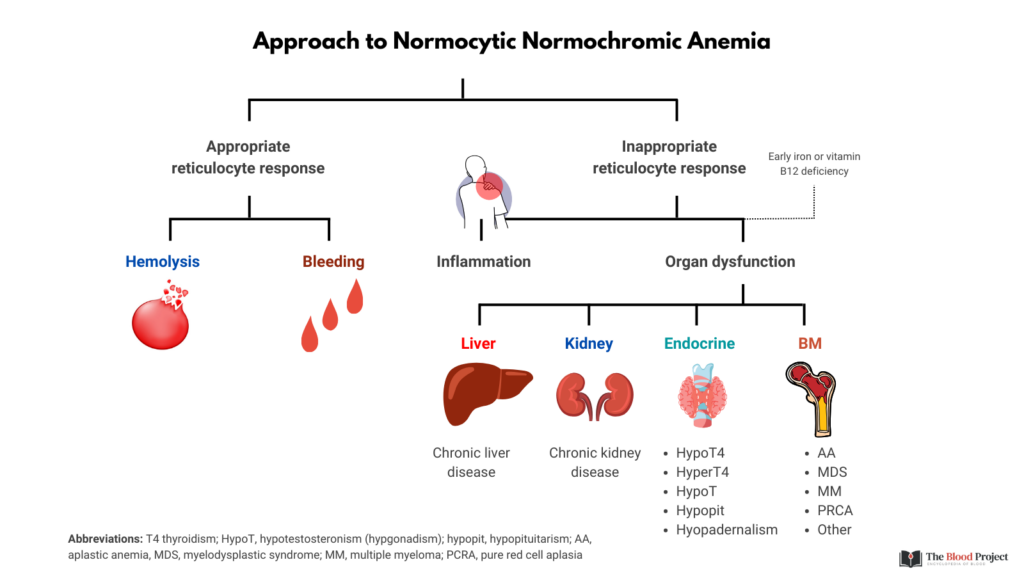For video presentation, click here.
There are many causes of normocytic, normochromic anemia. It helps to use an organizing framework that sorts causes into big, then smaller buckets:
- Hypo- vs. hyperproliferative
- Hyperproliferative:
- Bleeding
- Hemolysis
- Hypoproliferative:
- Nutrition
- B12 deficiency
- Folate deficiency
- Fe deficiency
- Inflammation
- Organ dysfunction
- Liver
- Kidney
- Endocrine
- Bone marrow (BM)
- Nutrition
- Hyperproliferative:
Approach:
- Question 1: Appropriate vs. inappropriate retic response (appropriate defined by absolute retic count > 120 x 10^9/L or 0.12 x 10^12/L)?
- Question 2: If appropriate retic response, is there bleeding or hemolysis?
- Question 3: If inappropriate retic response, is there inflammation or organ dysfunction?
- Question 4: If organ dysfunction, is there chronic liver disease, chronic kidney disease, endocrinopathy or bone marrow dysfunction?
- Question 5: If endocrinopathy, is there hypothyroidism, hyperthyroidism, hypogonadism (among others)?
- Question 6: If bone marrow issue, is there MM, MDS, pure red cell aplasia (among others)?

